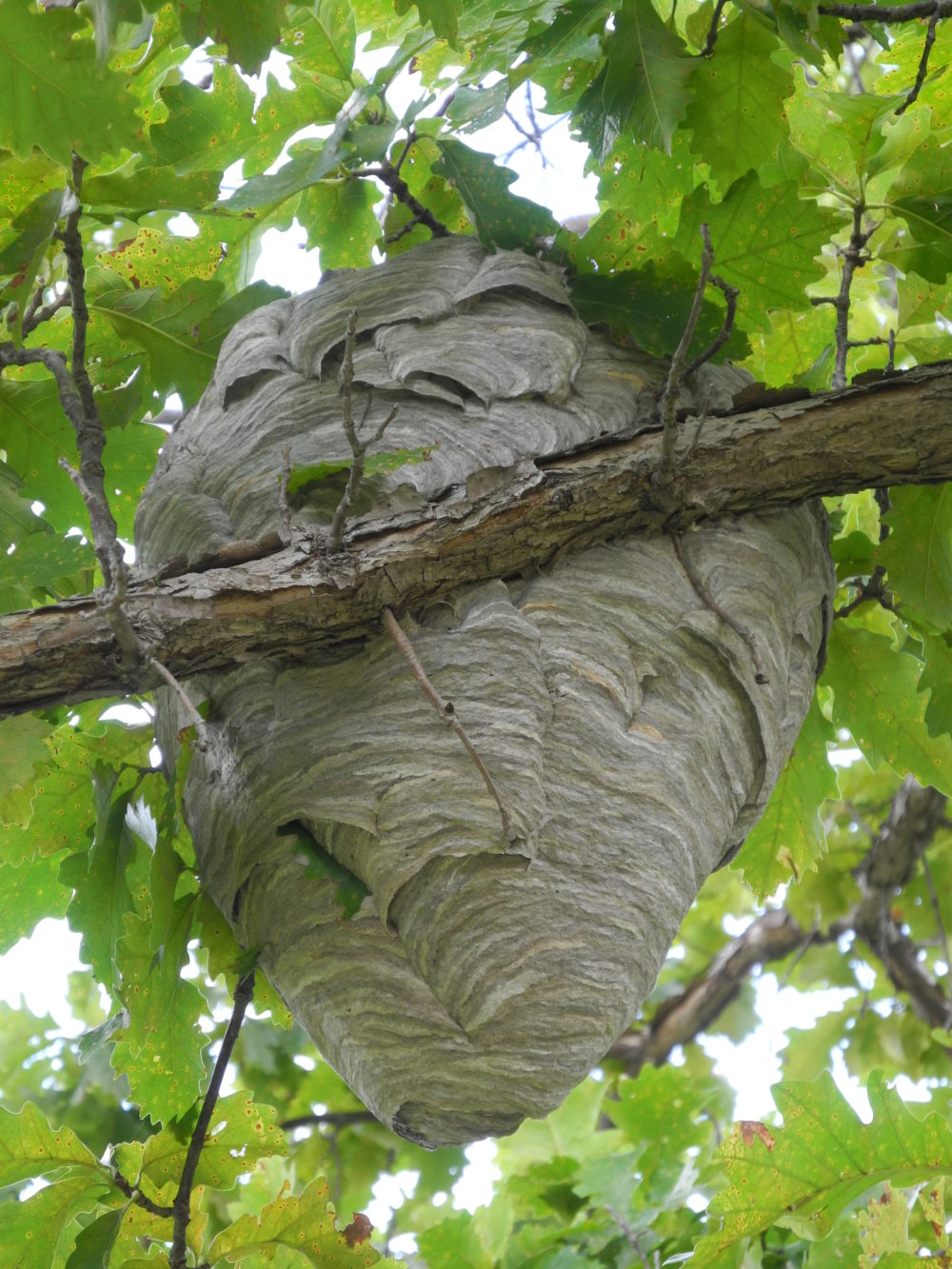
This large papery nest was found this fall, and was constructed by a colony of hornets
Most people don’t take kindly to finding wasp nests around their yard, but I find that they make for a convenient excuse for going in the house, pouring a nice glass of iced tea, and watching the end of the football game.
In fact, if you’re really lucky, you’ll find one of those big papery wasp nests hanging from the branches of a tree in your yard and become completely exempt from fall yard work of any kind.
Most people mistakenly attribute these large nests to Paper Wasps (genus Polistes) which make the individual honey-comb-like nests that we are all familiar with under our eaves.
But, these large, papery nests are actually built by a kind of hornet called a Bald-faced Hornet (Dolichovespula maculata). Their name only makes sense if you understand that “balde” is an old English word meaning white, and that these hornets have patches of white on their faces (it’s the same reason “balde-headed eagles” have the name that they do).
Bald-faced Hornets are common tree-nesting wasps (yes, a hornet is a kind of wasp). Their nests are constructed of 3 or 4 large honeycomb-like tiers (like that of the Paper Wasp) stacked on top of one another, with the whole complex wrapped in a multi-layered, two-inch-thick shroud of paper. The entire nest is constructed of paper that the hornets manufacture by chewing on rotting wood and mixing with their sticky saliva.
A nest is started by a single female (the queen) working by herself. In the spring (April or May) she begins by constructing just one small tier with only a few cells, in which she lays a small number of eggs, which she produced by fertilizing herself using sperm she stored in her body all winter. When the young hornet larvae hatch, the queen feeds them chewed up insects which she subdues with her paralyzing sting.
As the larvae mature to pupae and then adults, they are all female and they are all sterile and incapable of reproducing. Their only role is that of worker. The new workers toil to expand the size of the nest adding new tiers, the queen lays another, larger, batch of eggs in the new cells, and the young are now fed by the workers. Month after month, with each successive generation of new, sterile female workers, the colony (and the nest) grows ever larger until it reaches a maximum size of 400 to 700 individuals (all of which are female).
It is not until autumn that the queen lays a large batch of eggs which are a mix of males and fertile females. Upon maturation, the fertile females mate with the males storing the sperm inside their bodies.
Shortly thereafter, with the first freezing temperatures of autumn, the old queen dies (presumably exhausted), and all of the males die (presumably happy). The only survivors are the new, fertilized queens, which now scatter and separate, each finding a suitable hole or cavity in a log or tree trunk in which to hibernate for the winter.
The old nest is abandoned — left to deteriorate in the wind and rain of the impending spring. When spring does arrive, each surviving potential queen will emerge from her hibernation spot and begin her own colony, thus starting the cycle all over again.
Although they do have a painful sting, Bald-faced Hornets are rarely a serious threat to humans, as they are not particularly aggressive and tend to build their nests fairly high up.
Large papery nests found near the ground (inside hollow logs, walls, and underground burrows) are likely to belong to a different, more menacing critter – the common Yellowjacket (Vespula vulgaris).
To add to the confusion, a Yellowjacket is also a type of wasp. The Paper Wasp, the Bald-faced Hornet, and the Yellowjacket are distant cousins of each other, all belonging to the same family – the Vespid Wasps. Confusing? I know. It’s enough to make your brain sting.